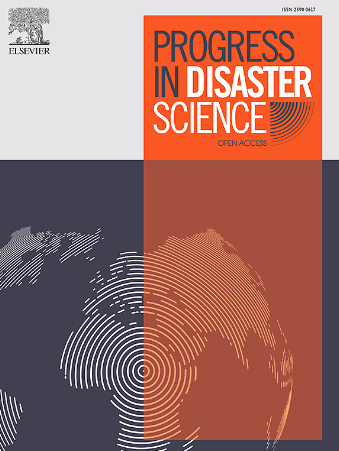Lightning-induced vulnerability assessment in Bangladesh using machine learning and GIS-based approach
IF 2.6
Q3 ENVIRONMENTAL SCIENCES
引用次数: 0
Abstract
This study investigates the lightning-induced vulnerability in Bangladesh using Geographic Information Systems (GIS) and Machine Learning (ML) techniques, addressing the limited research in this area. Lightning, especially prevalent during April to June, is a significant threat in Bangladesh, causing fatalities, injuries, and economic losses. By analyzing spatiotemporal patterns of lightning and casualties, and incorporating meteorological, geographical, and socio-economic factors into ML models (Random Forest, Multinomial Logistic Regression, Support Vector Machine, and Artificial Neural Networks), this research provides a nuanced understanding of lightning impacts. Findings indicate a downward trend in lightning strikes but not necessarily in fatalities, revealing the complexity of contributing factors. Northern Bangladesh experiences more lightning strikes, whereas the northeast has higher casualty rates. Correlation analysis indicates that lightning fatalities are influenced by multiple factors, with high correlations to cropland area (0.69), agricultural population (0.61), and lightning flashes (0.45). The Random Forest model has appeared to be the best model to predict [with high accuracy] the influence of lightning vulnerability factors. The most significant predictors of lightning vulnerability are cropland area (32 %) followed by literacy rate (19 %), rural population (18 %), lightning flashes (16 %), and water area (15 %) in Bangladesh. The extensive presence of croplands and rural populations increases exposure to lightning during peak farming seasons, while low literacy rates exacerbate risks by limiting awareness of safety measures. Additionally, large water bodies influence local microclimates and pose risks to those working or travelling in and around these wetlands such as agriculture laborers and fishermen. Changes in lightning flash frequencies due to climate variability, combined with socio-economic disparities and infrastructure deficits, further amplify vulnerabilities. A district-level vulnerability map developed in this study provides actionable insights for geographically/area-based targeted policy interventions to address these interlinked factors driving vulnerability. This comprehensive, data-driven approach marks a significant advancement in our understanding of lightening vulnerability and offrrs valuable insight for strategy developed to combat the fatalities of lightning in Bangladesh.
求助全文
约1分钟内获得全文
求助全文
来源期刊

Progress in Disaster Science
Social Sciences-Safety Research
CiteScore
14.60
自引率
3.20%
发文量
51
审稿时长
12 weeks
期刊介绍:
Progress in Disaster Science is a Gold Open Access journal focusing on integrating research and policy in disaster research, and publishes original research papers and invited viewpoint articles on disaster risk reduction; response; emergency management and recovery.
A key part of the Journal's Publication output will see key experts invited to assess and comment on the current trends in disaster research, as well as highlight key papers.
 求助内容:
求助内容: 应助结果提醒方式:
应助结果提醒方式:


